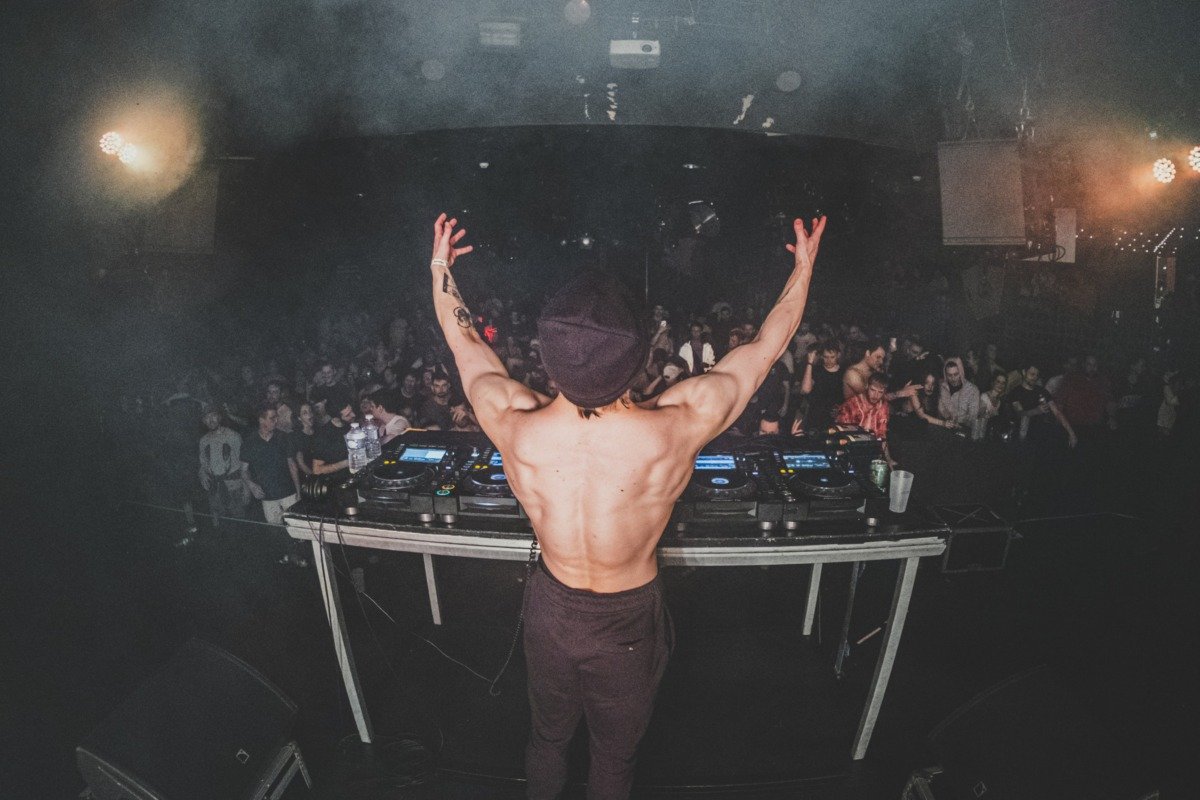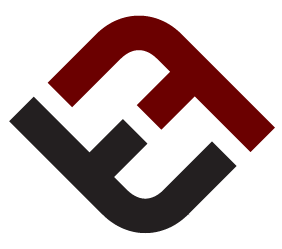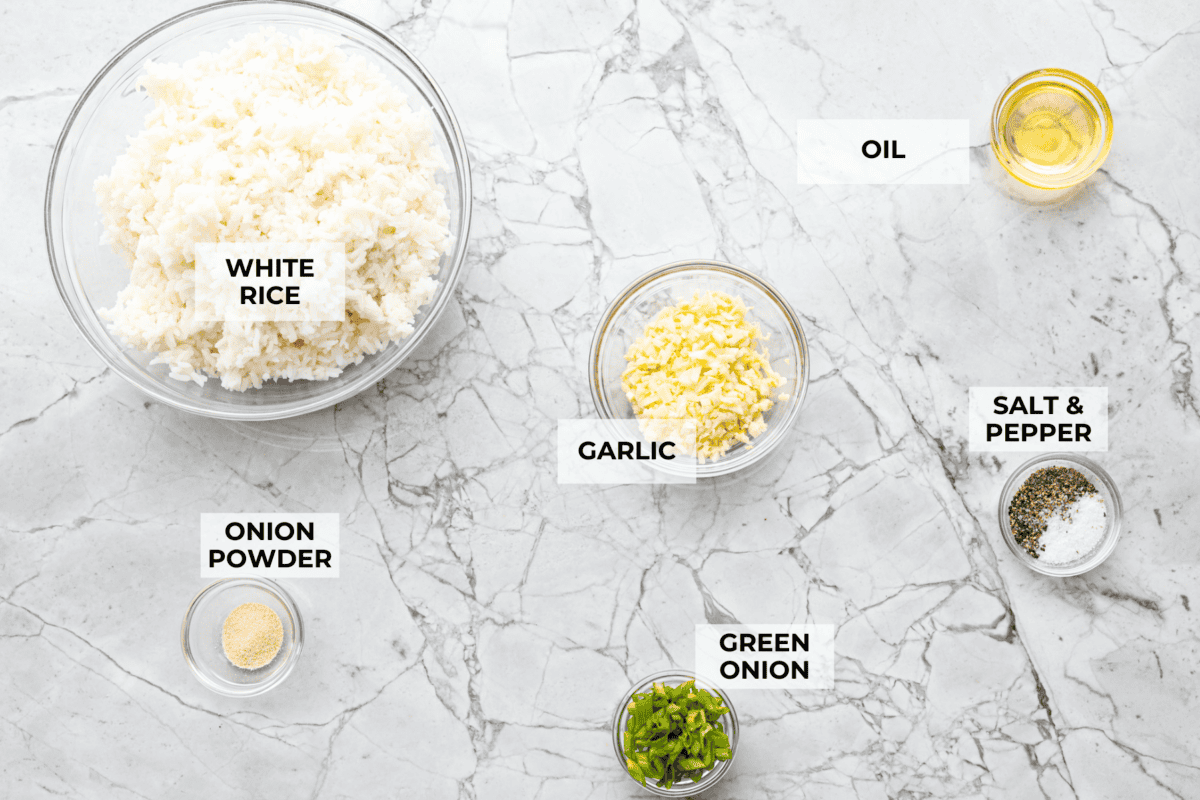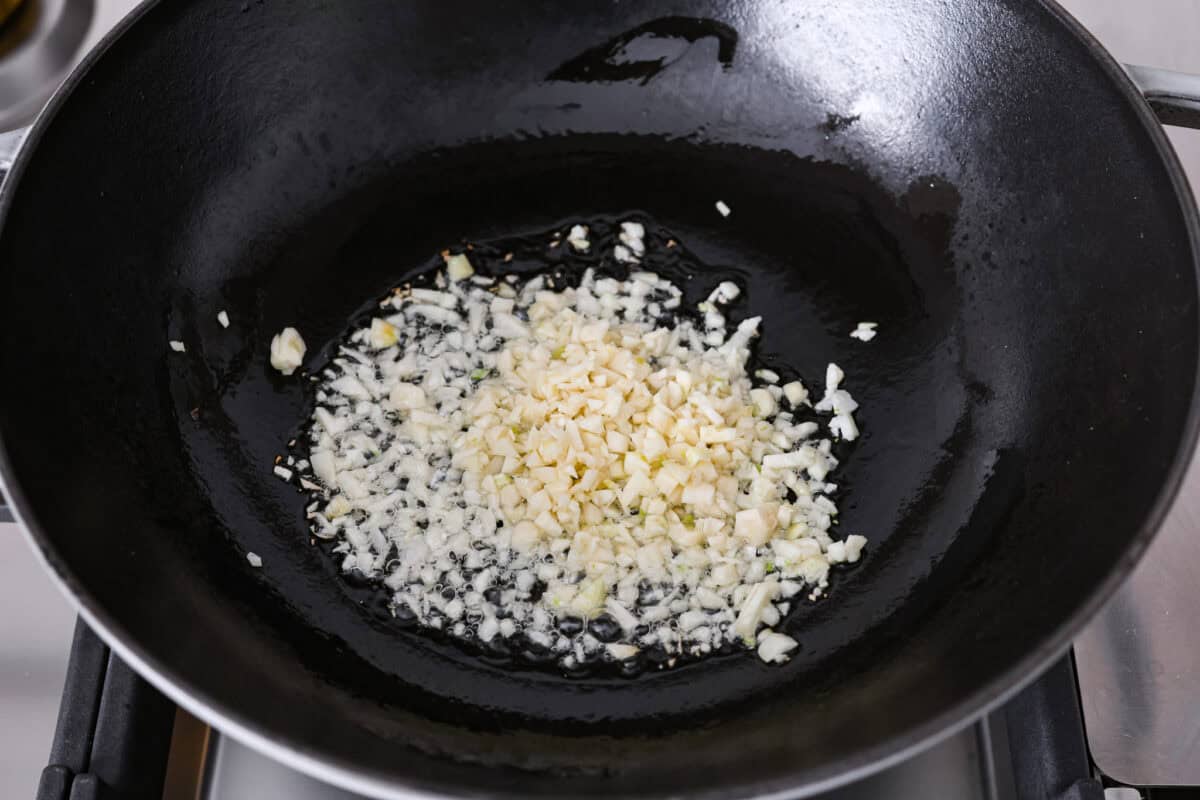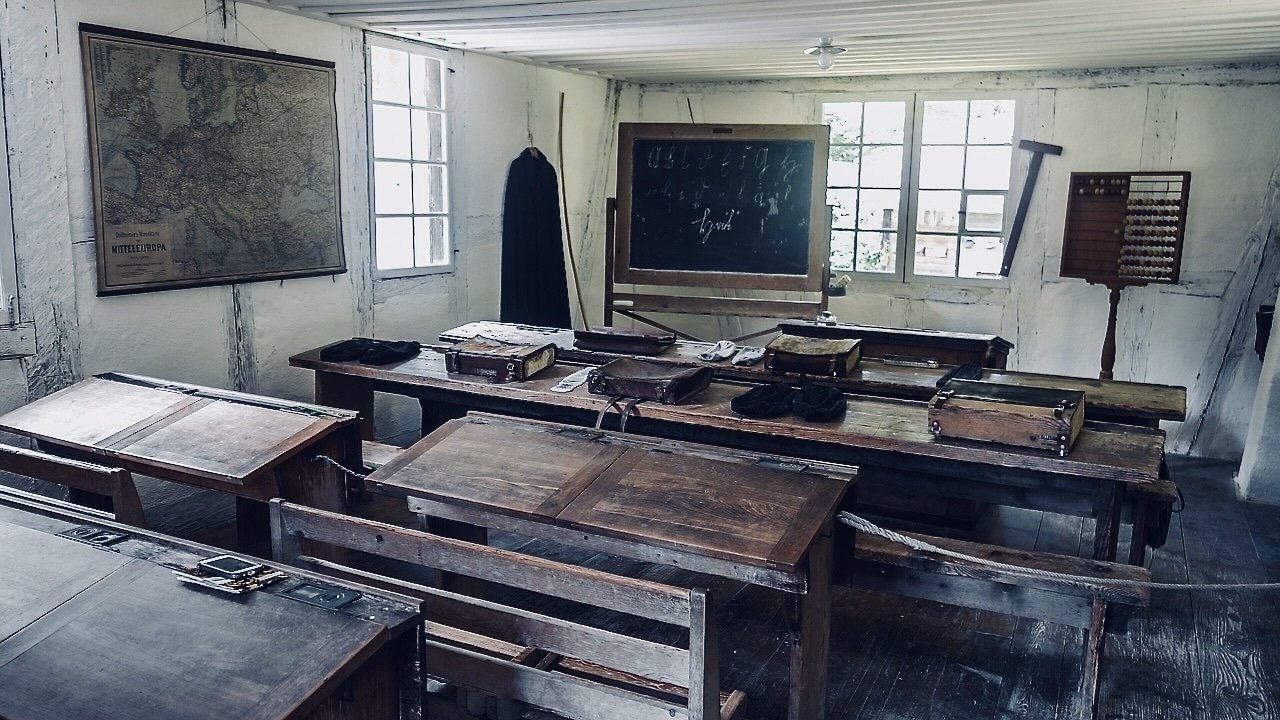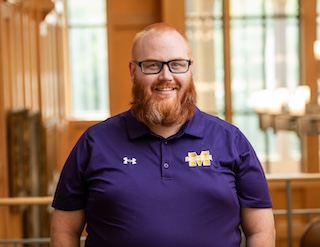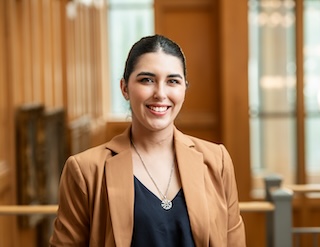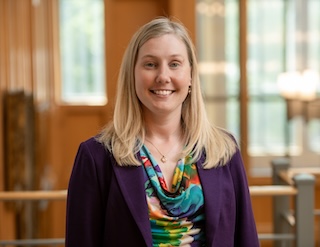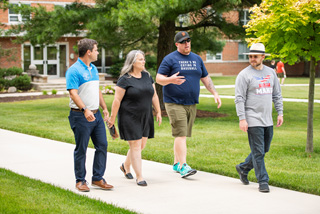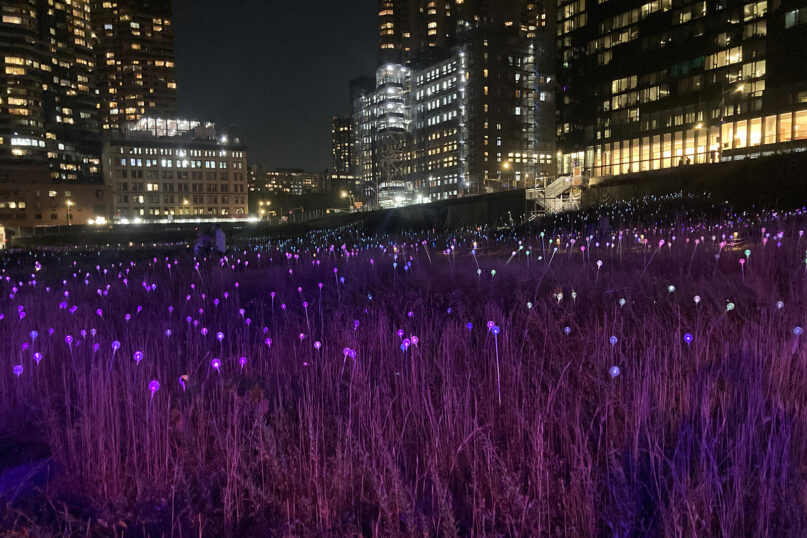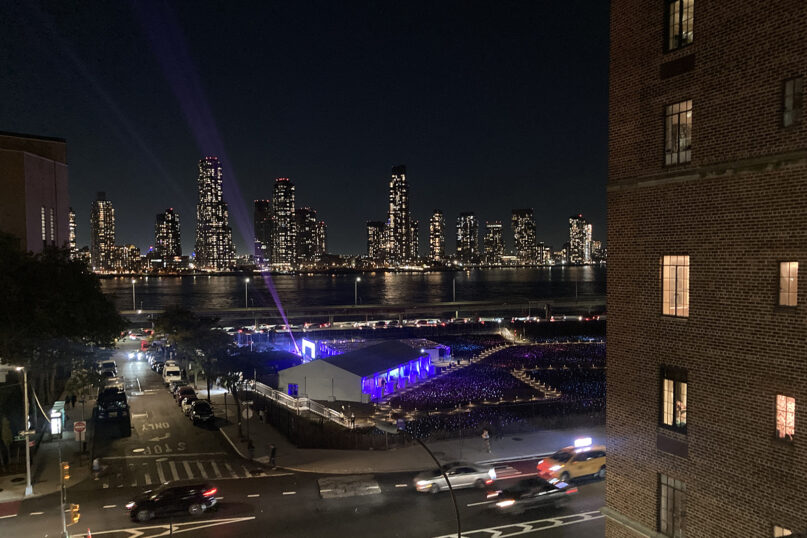Mindy:
Everyone wants to focus on strategies to fast track their financial independence journey. Our guest today fired in three years by quickly and strategically scaling his real estate portfolio. Stick around to hear how he did it. Hello, hello, hello and welcome to the BiggerPockets Money podcast. My name is Mindy Jensen, and with me as always is my understands Bitcoin, but still won’t buy it. Co-host Scott Trench.
Scott:
Oof Mindy, that’s a real hard money intro. Alright, BiggerPockets has a goal of creating 1 million millionaires. You are in the right place if you want to get your financial house in order because we truly believe financial freedom is attainable for everyone, no matter when or where you’re starting, as long as you don’t invest in crypto. We are so excited to be joined today by Henry Washington Co-host of the On the Market podcast, published author of real estate deal maker, and obviously goes without saying, a very successful real estate investor that allowed him to say goodbye to his W2. You may recognize him from BiggerPockets, but do you know the ins and outs of how Henry gets started? We’re going to pull back the curtain today here on BiggerPockets money. Henry is so excited to have you here on the show. Thanks for joining us.
Henry:
Oh, thank you for having me, man. This is exciting. I get to tell my story from a slightly different perspective. This is fun.
Mindy:
Well, let’s go back in the way back machine and look at your financial situation. Don’t laugh, you’re going to give it away. Let’s look at your financial situation before you started investing in real estate.
Henry:
Yeah, the word situation is probably accurate. It was definitely a situation. Look, I didn’t have any financial education before I started researching and learning about real estate investing, and you hear a lot of racks to richest stories even in real estate. Started from the bottom, now we’re here kind of thing. And for me, I had a different problem. I had a upper middle class upbringing. My father was college educated. He was a teacher, but he also always had a side hustle. He always had businesses. He ran a restaurant, so I didn’t want for anything. I had everything I needed and most of what I wanted, and that created a different problem. When you go from res to riches, people typically say, well, I don’t want to have to be in that lifestyle anymore. They work really hard so that they don’t have to. But for me, I was in a position where I had a very decent upbringing.
Henry:
And so what that created for me that caused a problem with my financial future was entitlement. Right? Once I left the house from my parents’ home, I wanted the same lifestyle that was afforded to me without having to do all the work that my parents had to do to be able to give us that lifestyle, right? Because I was so accustomed to it. And what that did was, I mean, I went to school, I got good, I got a good education, I got a good job. I was making good money out of college. I had a technical degree. I was making six figures before I was investing in real estate, but I spent all of my money, I was always broke and it was all spent on lifestyle. I wanted the nicest apartment that I could buy. I wanted the nicest car that I could buy because I wanted to maintain this lifestyle that I hadn’t earned yet. That wasn’t a problem for me because I would basically get paid, spend all of my money, and then try to figure out how to eat off the dollar menu at McDonald’s until my next paycheck. And as a single male, that didn’t bother me at all. But what I found out was that I got married and it did bother my wife. So that was after getting married, I started getting slapped in the face with all these wake up calls that like, Hey, you can’t live like this. That was my financial situation before real estate investing.
Mindy:
So you get married to your wonderful wife who’s like, you’re not going to continue to live like this anymore.
Henry:
Well, kind of what happened was we got married very fast, so we met and then got married 365 days later to the day. And so that’s a very quick transition and not a lot of time to make financial transitions in that timeframe. So to go from meeting her to getting married in a year and then now we’re starting to put our finances together and starting to do the things you do as a married couple, I was quickly realizing that I couldn’t afford much of anything that we wanted. We tried to buy our first home and as we applied for the loan for our first home, the lender called me and said, you can’t be on this loan if you want your wife to own a home. Your credit is too bad. You don’t bring enough financially to the table. It’s better off if you’re not on the loan for us to want to give you a loan. And I just remember feeling like somebody punched me in the stomach because I wanted to be this provider, and now I was hurting my wife’s chances, our chances of home ownership.
Scott:
So what did your debt situation look like here? You’re making six figures. What was going on for you to get that reaction from the lender?
Henry:
Yeah, I had racked up some credit card debt over the years, and then through that was paying high interest rates on just making minimum payments. And so I had several credit cards because what would happen, Scott, is if I got to a point where I couldn’t afford to live until my next paycheck, I would spend what I needed to spend on a credit card until I got paid again, and I would just run those credit cards up without a plan of paying them off. I was doing all of the wrong things financially, and so I carried all this debt into a new marriage.
Scott:
And was that all credit card debt or was there other of the debt here too? Like car loans?
Henry:
Yes, there was the car loans, but it was mostly credit card debt I was renting, so I didn’t have a mortgage debt.
Scott:
Okay. And can you give us an idea of the ballpark of the size of this debt
Henry:
It was close to? So gosh, it was about $40,000,
Scott:
$40,000. Okay, so we’re in this spot. We’re getting this bad news. It’s gut punch here. What happens next? And specifically I want to learn, when you decided to make real estate your preferred vehicle of choice. I did there. How did the next couple of years play out here after that punch?
Henry:
So what happened is after I got the gut punch about the loan, I did remove myself from the loan process. My wife did purchase the home and allow me to live with her. So I thought that she gets cool points for letting me be her roommate for a little while. And then after we bought that house, we had a conversation, the young married couple conversation. We all have it at some point after we get married. It’s the, well, how many kids are we going to have and what cool vacations are we going to go on and what’s our dream house going to look like? It’s your dreaming together. And I remember having this conversation and I’m in my face trying to portray, this is a fun conversation dreaming with you. But in my stomach, I was in knots. I was like, I don’t know how I can afford any of this.
Henry:
And I had a real legitimate panic attack at three in the morning after that conversation because I, I’m not using that term lightly. That was legit what happened? I woke up having a legit panic attack, breathing hard, sweating, freaking out because in my mind I was like, she’s going to figure out that I look good on paper, but when you really dig into the numbers, the math ain’t math and he’s not going to be able to provide me the lifestyle and the life that I deserve. And so I was like, she’s going to leave me. And so I better figure out a way to make things work. And at three in the morning, that’s when I started Googling. Well, what I actually Googled was how to make extra money. I just thought, if I can make some extra money, then I’ll have money to do the things that we need.
Henry:
And that’s when all these words started popping out at me that I’d never paid attention to before. But now I’m like, yeah, that sounds good. Things like passive income and cashflow. And I was like, yeah, how do I get some of those things? And as I started to research more, every time I would Google these terms, the top search results always were BiggerPockets forum posts or BiggerPockets blog articles. And I was like, what’s this BiggerPockets? What’s this? And it was real estate investing. And then as I started to do more research, I was like, wait a minute, this is just regular people. These are just normal folks that are doing this and achieving these things, these financial freedom, these cashflow, this passive income. And I was like, man, I had never thought about real estate from that perspective before. I had just always assumed rich people or businesses on real estate. I just never had to think about it from this perspective before. And now as I started to see and just see that there was regular people, I was like, I’m a smart guy. If these guys have figured out how to do this, people all over the country, I got to be able to figure this out.
Scott:
So I love these pivotal points. A lot of people go through something similar to what you had where there’s the moment where things begin to change and there’s an aha about how capitalism works and how to accumulate assets and then generate income and returns off of them. What changes?
Henry:
A couple of things change. The first thing I always tell people is I was so comfortable and confident in that decision at three in the morning with absolutely no, I had none of the things that would tell you that this is a good plan. I didn’t have good credit. I didn’t have money saved up, and my plan was to buy houses to fix our financial woes. It seems silly, but I had such a peace about it that I woke up the next morning and I just said, okay, I now have to go figure out how to do this and I don’t know what that looks like. And so the very first thing I did was I found someone that I worked with that I knew was a real estate investor. She was in commercial real estate, but I didn’t even really know the difference at that time.
Henry:
And I went to her and I said, I have decided I’m going to invest in real estate. I know this is something you know about. I didn’t even ask her to teach me. I just said, can you point me in a direction? And she said, here’s a box of books. Pick one. If you read one of these books, then I’ll help you because people like to say things and not do it. So I won’t help you unless you read one of these books. And I was like, all right. So I just started rummaging through the books, looking for a title. I might know something or recognize. The only book I saw that rang a bell was obviously Rich Dad, poor Dad, didn’t know anything about it, just the name sounded familiar. So I was like, I’ll read this one and then my head exploded.
Mindy:
While we are away for a quick break, we want to hear from you like Henry, have you started investing in real estate while working a W2 job? Submit your answer in the Spotify or YouTube app. We’ll be back after a few quick ads. Let’s jump back in. Okay, so you have made peace with the fact that you are going to invest in real estate. What’s your first step?
Henry:
Talked to the coworker, read Rich Dad, poor Dad on a whim. I didn’t know what the book was. The key there was, I also told my wife about it, obviously, and she read it at the same time. So I did the audio book. She read the actual book. So we were going through it together and learning the lessons together. And so one of the key takeaways, well, we read that book and then right after that book we read The Richest Man in Babylon together. And this was over the course of a month or so, not even we were hammering through these books. And the key takeaway, one of the key takeaways in both books is paying yourself first.
Henry:
And it just really stuck with me. I’d never been a saver, never ever, ever had I been a saver, shocker based on what I just told you. But I vividly remember having this conversation with her. I said, look, I don’t know what investing in real estate is going to look like. I don’t have that foresight. We’re still learning that. But what if while we’re preparing, we are paying ourselves first, we’re setting aside 10% of our income. Let’s say we do that for a year and we never buy a property. Look how much money we will have saved up in comparison to where we are now. So even if we never buy a property, but just stick to this one principle that we’ve learned, we will be in a much better financial position than we are now 12 months from now. And what that did was as we started to put money away every pay period, and yes, it helped us to figure out that we can make ends meet, even putting the 10% away, we’ll figure out a way.
Henry:
But what it really did was it gamified saving money for us because we would see that number start to grow. And so now every time we would get a little bit of extra money from something, you get a little extra money from this and from that or you sell something. We were no longer thinking about what could we go buy with our extra money? We were like, all right, let’s start in that account and let’s add to it. And so we were putting in more than 10%. We just wanted to see it grow. And that’s not something I’d ever done before, but it really helped change my mindset about money just from doing that one basic principle. So that’s the first thing we did.
Mindy:
I love gamification. My husband and I were recording our expenses and then we were like, okay, how little can we spend every month? Now? It’s a game, it’s a choice, and we’re doing it together. And I think that’s so important. Having your partner on board enthusiastically on board is great, but even just not actively opposing you is going to give you so much success. Did she ever question the whole real estate investing thing or was she on board from day one?
Henry:
She was on board from day one. So she had family members who had invested in real estate or have invested in real estate in the past, not to the scale that we do it now. She was more familiar with the concept than I was initially, and she understood how valuable and powerful it could be before I ever knew that. She was like, yeah, this is a thing. We should definitely look into it. And the second thing that I did Mindy, was I didn’t know how to do it. And so I said, there’s got to be people in local community who are doing it. If I can find them and get around them, I can see what they’re doing and hopefully try to repeat it. So I didn’t know anything about real estate meetups at the time. I just started Googling. I just literally Googled real estate investors in northwest Arkansas, and that’s how I found the Real Estate Investors Association here.
Henry:
And I started going to those meetings and I went to every meeting I could find if a real estate investor was in a room. I found a way to be in that room every time I went to every meetup, even the meetups had nothing to do with what I wanted to do. My real estate investment group had three meetings a month, four meetings a month. One was their regular meeting, the regular monthly meeting. Then they had one specifically for landlords. They had one specifically for rookies and one specifically for builders and developers. I went to all of them. I knew I didn’t want to be a builder or a developer, but I was in that room every time. I was like, give me all the knowledge. I just wanted to be around everyone. I made it my job to be around other investors so I could learn what they were doing.
Henry:
And what that really did for me was it created this network of people who just really wanted to help me. I had no idea before going into this, how amazing of a community real estate investors are real estate investors. Most of them want you to be successful along with them. Most of them want you to help them. They’ll give you all the secret sauce. No one’s really. There’s very few real estate investors who are like, this is my thing and I’m not sharing it. I didn’t know that. And so I just built this community of people who wanted to help me, and that’s that community of people really helped me with my very first deal.
Scott:
Awesome. And this is all taking place in 2017 and 2018, is that right?
Henry:
2017, I bought my first property 90 days after that panic attack.
Scott:
That’s awesome. And how did you come up with the cash for it in that case? Talk about that first deal because you’re saving 10% of your income on it.
Henry:
So the first deal, here’s what happened. I started to tell people I was a real estate investor, even though I didn’t know how to be a real estate investor, I’d never bought a property. I didn’t have the means to be a real estate investor in my mind. But I’m going to put it out there that that’s what I am, because A, I’m going to be it. And if I don’t believe I’m going to be it, then why should anybody else believe I’m going to be it? And B, I want the universe to return to me the things that real estate investors have, and I have to put that out there if I want those things. If you think about, I tell the story all the time. If you wanted to be punched in the stomach right now, if your life depended on being punched in the stomach right now, what’s the best way for someone for you to get someone to punch you in the stomach,
Scott:
Punch somebody in the stomach,
Henry:
That’s it. You punched them in the stomach. That’s how the world works. And so I just put it out there. I’m a real estate investor. And sure enough, somebody called me, one of my good friends called me one day and he said, Henry, I heard you’re buying houses. Is that true? And I was like, yeah, yeah, I’m buying houses. He was like, dude, that’s crazy. I have to sell my house in 30 days. He was a good friend of mine. And so I was like, man, what’s going on with your house? I knew we were at his house. He was a buddy of mine. And he was like, dude, I moved out of my house a year ago. I moved into a house on my church’s campus. We’re trying to help build and grow this church. I have to buy this land for this church.
Henry:
I have to close on it within this state. I need X amount of money to do it. I’ve got to sell my property, get the money and buy this house. I’m on a tight timeframe. He was like, so I’ll sell you my house. I’ll sell it to you for $116,000. As long as you can close on it in 30 days, the house is probably worth 116, 170,000. I don’t care what it’s worth. I just need to sell it for 116. That gives me the exact amount of money I need to go buy this property for my church. So can you buy my house? And I was like, yeah, I can buy your house. He was like, cool, what do we do? And I was like, hold on. So I went to my desk and I Googled. We worked in the same building. So I went to my desk and I Googled, how do you buy a house without a real estate agent?
Henry:
And it told me that I needed to get a contract, and I googled what’s a real estate contract? And then I had to Google how to find one, and then I downloaded one off the internet, and then we signed that contract to buy his house on the spot. That’s terrible legal advice, but great action advice. Don’t do that from a legal perspective. No, but that is literally what I did. It’s literally what I did immediately. I was like, all right, well, I need money. I have to be able to buy this house. I had a thousand dollars in my savings account. That’s all the money I had saved up. I’ll give you guys a high five, one of you two, a high five, if you can tell me why I specifically had $1,000 in my savings account. Why specifically $1,000.
Mindy:
Dave Ramsey.
Henry:
Yes, exactly. I had took Dave Ramsey, I got to baby step one, and I never got past it. So I had $1,000 in savings account from my baby. Step one a Dave Ramsey, there’s your high five. And so I was like, cool. Well, I’m buying it for 116, I have 1000. I need $115,000. Where do I get $115,000 to buy this house? I have no idea. But banks give people money to buy houses all the time. So I’ll go to a bank and see what getting a loan for a house looks like. And so I went to the bank, closest to my office because where else would I go? I walk into the office and I literally am holding, I’m literally holding the contract now. I just happened to go to the bank closest to my office. That bank just happened to be a local community bank.
Henry:
And when I walked in the office, when I walked in the lobby, the person that I talked to just happened to be the commercial lender who was just standing in the lobby chitchatting. I planned none of that. So I go in and I’m like, can I help you? And I’m like, yeah, I’m looking for somebody who can help me buy this house. And the commercial loan officer walked up to me, he grabbed the contract and looked at the address and he was like, come to my office. And he started putting it in Google, and he was like, this house is worth a lot more than this. And I was like, yeah, yeah, that’s why I want to buy it. And he immediately hadn’t rent my credit, had no idea if I was lendable or not. And he said, we would love to loan on this house.
Henry:
He was like, Hey, we heard a commercial loan. We would do a commercial loan. We would lend you 85% of the purchase price. We would lend you a hundred percent of the renovation costs if you need money to renovate it, and then all you would need to bring is a 15% down payment. You have a 15% down payment. And I was like, yes, I absolutely did not, but I wasn’t going to tell him that, right? And so I knew based on what he was telling me. So I was buying it for one 16, I needed $17,400. That’s my down payment that I needed. So I was ecstatic. I was so happy because when I started my journey a couple hours ago, I needed $116,000. And now I only need $16,400. Are you kidding me? I was almost there. I was so happy.
Henry:
So I went to my network of real estate investors. Like I said, I had been going to all these meetups. I had built this network of investors who I knew were successful. And I called one of them and I was like, dude, how do I find this money for the down payment? I’ve got this really good deal. I got to figure out a way to buy it, but I need $16,000. How do I get it? And he was like, he literally sat on the phone with me and he brainstormed a bunch of ideas, none of which were going to work. And I was like, all right. Well, I told my friend I was going to buy it, so if I can’t buy it, will you buy it? At least I know you have the means to do it. I just want to make sure that he gets taken care of.
Henry:
And he gave me my first lesson in business. He said, Henry, this is a good deal. He was like, I will buy this deal if I need to. He was like, but you got to figure this out. He was like, if you’re going to be successful, you got to figure out a way. And so he sat there on the phone with me some more and he ended up, he was like, wait, well you work. You work, right? So use your 401k. And I was like, I don’t want to cash out the 401k. There’s penalties and fees. No. He was like, no, no, you can borrow against your 401k. And I was like, what does that mean? So he kind of talked me through a 401k loan and I was like, wait a minute. So I can borrow against my 401k. I can use that money to buy the property if I rent the property out for market rents, the property cash flows, the cash flow actually pays back the 401k loan, so I technically don’t pay back the 401k loan. And he was like, well, yeah. And I was like, wow, that’s no brainer. That’s what we should do. I just got to go find a 401k because I didn’t have one of those either.
Henry:
And so luckily my wife did, and I went home to her and said, remember when I woke up and said we were going to be real investors? And she was like, yeah. And I was like, great. Well we need to borrow $17,000 from your 401k so we can buy this rental property. And she said, okay. And we called her employer. We talked through all the details. We had the money in a week, we bought the house, we raised the rents with the tenant that was in there to market rents, and it started to cashflow and pay for the property, the expenses, and pay back the 401k loan.
Mindy:
We have to take this one final break, but stick around for more from Henry Washington right after this. Welcome back to the show.
Scott:
That’s awesome. And look, this just an incredible story and the concept I want to bring to the front here is the word luck in this journey and luck is everyone always cites that as a factor in success. It’s always a factor in success. But you think about your situation here, why did you get lucky? Well, you told everybody that you were trying to become a real estate investor that led to someone you knew who needed to sell their house telling you they want to sell the house. Then you went and went to a bank. And very luckily they happened to have people who specialize in lending. Go figure all around Matt. And so you’ve worded all this luck, but I think this is a concept that people overestimate as a factor. Luck is made to a large degree, right? Luck happens. You’re not going to get lucky reading Rich Dad Port Dad in your basement.
Scott:
You’re going to get or playing a video game or whatever it is. You’re going to get lucky at one of these meetups if you’re trying to invest in real estate and you sit on a plane next to a successful real estate investor and real estate’s not top of your mind, you’re never going to get lucky. That’s just going to be another day on a plane ride for. And so that’s how that works. And I want to call out that concept of putting yourself out there in the world is so easy today. 10 years ago, I bought my first property. I had a very similar set of actions in a lot of ways to what you’re talking about here. And I put myself out on the BiggerPockets forums. You can go read my very first forum post. Someone responded to that and they later sold me my duplex. Within 90 days of me making that post, I went under contract on my first duplex in a very similar set of circumstances. So there is this concept of as you get going on these journeys with whatever it is from an investing or business or career standpoint, state that goal, write it down and then tell people something might happen. But it definitely won’t happen if you don’t tell anybody and don’t put yourself out there. So I just wanted to bring that luck framework to the
Henry:
Luck is only half of the piece of the puzzle for you to actually be lucky. I call it positioning. The luckiest thing in the world can happen to you, but if you’re not positioned to take advantage of it, then it doesn’t matter. And so we position ourselves to take advantage of things when they happen to.
Scott:
And look, I think there’s a spectrum of how people should feel about this. And I know for me personally, I would never have done it. I would never have bought a property with a thousand dollars in my cash account by borrowing against my 401k. I would’ve been comfortable with that. And I think that I do want to call out that for many, especially people listening to the BiggerPockets Money podcast, we tend to be a little bit more conservative than the folks on the market or the real estate podcast with finances over here on BP money. But I think that that luck factor compounds as your cash position and liquidity improves. So if you had saved up $25,000, even more opportunities would’ve been available to you or your likelihood to pounce on this. So I don’t want to totally dismiss the financial foundation as being a factor in luck. I think it is. You just see those opportunities when your bank account has 10, 25, $50,000 in it differently than when you don’t have that. And that makes it everything easier, but you don’t need it. To your point, if you find a deal at 60,000 below market, there’s a lot of ways to make that work.
Henry:
The best part about this deal is once I bought that deal, the lender called me and he said, Hey, would you be interested in taking out a line of credit on the equity that you have in this house? And I was like, I don’t know what that means. And so he walked me through what a home equity line of credit is, and he said, so here’s what we could do for you. We can give you access to 70% of the equity that’s in that home that would give you access to X amount of capital. If you can go fund more deals like this, we would love for you to bring those deals to us. We would fund 85%, we would fund a hundred percent of the renovation. You could use this line of credit as your 15% down payment, essentially no money out of your pocket if you want to buy your next property.
Henry:
What you then would need to do is if you flip that house, you sell it for a profit, you pay back off the line of credit and then you can do it again. Or if you decide you want to keep that house as a rental, you could rent it out. And then if you refinance that house, then you can pull the cash back out and you can pay off the line of credit so you can do it again. This lender was literally teaching me the burn method before there was a fancy cool name for it, or if there was, I didn’t know what it was yet. I don’t know when Brandon’s book came out, but he was teaching me the way to leverage the bank’s money. And what I learned through this process is yes, obviously how to do the burn method or how to borrow and then pay back on a line of credit.
Henry:
But what he was also teaching me was essentially how small banks work. He was saying, what he told me was like, these deals are great for us because they’re low risk for us. He was like, if you buy a deal at 116,000 that’s worth 170 Henry and you don’t pay your loan, we’ll take the house back. We can go sell that house at a discount and make more money than we’re going to make on the interest payments that you’re paying us for the loan. So from our perspective, these are low risk deals and we would like more of them in our portfolio, right? Because we have to lend money to stay in business. And so we can form a partnership here. You bring us these good low risk deals, we’ll fund you, and then we have this kind of working relationship. And so he was also teaching me how to leverage small local community banks.
Mindy:
Henry, let’s talk about your portfolio now because this, I love all of the step-by-step that you’re doing. I love your confidence. I have a thousand dollars. I’m going to buy real estate. My friend needs 116, so now I need 115. Where am I going to find it? Your lender sounds like a dream. I love that he took the time to share this with you. In 2017, lenders were still pretty busy. It’s not like now when they’re got a little more time on their hands. What does your portfolio look like now and how many of them are financed through the same lender?
Henry:
Man, I would say I’ve probably financed of the portfolio, probably 25% of my portfolio went through that bank in one way, shape, or form. But I also did a lot of flips with them as well that aren’t existing in my portfolio anymore. My portfolio looks like now I got up to about 138 to 140 doors maybe a few months back, and we’ve been starting to sell some properties. And a lot of that has to do with a lot of lessons that we’ve learned this year. This has been a good year in terms of introspection in our business. I grew very quickly, which was good, and it had ups and downs. I don’t have any regrets about how we grew. And then we got to a point this year where we really, or the beginning of the year, late last year, beginning of this year, we really started to hire because if we’re going to continue to scale, I couldn’t do everything that I was doing.
Henry:
And so we hired some positions, ended up hiring a project manager, hiring the project manager was good for growth, but bad for my enjoyment. I missed being as involved in the day-to-day. And I think it’s so easy to get caught up in seeing what everybody does for people to watch BiggerPockets and go, all right, well, I need to get to x, y, Z doors because that’s just what people are doing. And as I continue to grow and scale and go to masterminds and things, I see all these other people growing and I was going down that path. And then I realized after having the project manager for about a year, I wasn’t enjoying the process as much anymore because I wasn’t as involved. And it’s okay for me to be an owner operator. You hear it all the time. You should work on your business, not in your business. And I believe that that’s true at some level, but that only has to be true to the level that you want it to be true. You get to decide what you want your life to look like, how you want your business to look like, how you want to spend your time.
Scott:
Henry, how much of that is related to business performance versus, because one of the things is if it’s not working, then it’s not fun. And if it’s working, then it’s real fun and yeah, you’re shaking your head.
Henry:
Yeah, that’s a fair question. Absolutely. To say it differently, Scott, something is always going to work in your business. It’s your job to figure out what the thing is that’s working based on all the market conditions and your financial conditions, and then to pivot accordingly. So there are some years where we bought a whole lot more rentals and did a lot less flips. And this year we’re doing a whole lot more flips and a lot less rentals because the market conditions are dictating what is more beneficial from a financial perspective. And so it wasn’t performance that caused me to say, I want to get back in the business. It was I wasn’t being fulfilled. And so my goal at the beginning of the year was I was actually planning on doubling my portfolio. So I had about a hundred doors. I wanted to get to about 200 doors just because I felt like it’s such a good time to buy because people feel like prices are high and people feel like interest rates are high.
Henry:
But in the grand scheme of real estate, interest rates have been much higher than this in the past. And in the grand scheme of real estate, I don’t know if prices are high, I think in three years we’ll look back and say, man, prices were low then. And so I was just trying to take advantage of the time that we were in. And as we were doing that, then we were looking at performance, Scott. So we did look at our finances and we were figuring where are we spending most of our money? Where is the money going out of the business versus where is the money coming into the business? And I also read the 80 20 principle where essentially 80% of your profits come from 20% of your deals is essentially what the principle is. And so I was like, okay, well where are we making the most money?
Henry:
Where are we not? Where are we losing money? And that caused me to look at my portfolio and say, all right, well here’s obviously some deals that are making us the most amount of money. So how do I look at my portfolio, sell some of the stuff that isn’t producing what we originally underrated it produce, or maybe it’s just not a property that we enjoy. Sometimes you buy a property, the numbers are great, you’re like, yeah, this is going to be amazing. And then you’re operating it and you’re like, I don’t really like this. I don’t really like this one. And so we’ve done a lot of trimming the fat, getting rid of the things that we don’t enjoy to bring in more of the things that we do enjoy that are producing us the income that we want to produce. And so you don’t really get to know or understand that until you do some deals and have a portfolio that you can evaluate and figure out where that is. And so now we’re operating more on a less is more. Because if I can look at my portfolio and say, well, I make the most income from these types of deals, I get the most enjoyment from these types of deals, so why don’t I focus on those? Get rid of the things that don’t check those boxes for us. And then as I’m building a portfolio, I’m now building something that I love and enjoy so much more than just buying every deal. That makes sense.
Mindy:
I love that. So Henry, in terms of your monthly or annual spending, how much income are your properties bringing in? So
Henry:
We don’t live on our rental property income, so it sits in an operating account and the rental property income. Here’s the thing. I say this, I think I said this on an Instagram reel that sent people in a tizzy one day, but I was like, cashflow is a myth. I want to buy cashflow when I underwrite it, I want to underwrite it so that it cash flows, but things change. Some properties cash flow, great. You expect them to some. Some maintenance issues are huge, some aren’t. And the bigger your portfolio is, the more portfolio problems you have. You don’t just have one HVAC go out, you have 10 HVACs go out. You don’t just have one issue here. You have several issues here. You have all these capital issues. And so yes, cashflow comes in, but money goes out because of maintenance and all these things. And so that animal of a real estate investment rental property account just kind of takes care of itself. I live off of income from other streams of income, from the other things that I do from the books and the teaching and all these other income streams that I have from getting to talk and travel. So I try to make that my active income so that my real estate business can just be a real estate business that we don’t have to use to feed ourselves with. Does that make sense?
Scott:
Absolutely. It’s just interesting that that’s not the goal that most people I think are going forward with the real estate. I think most people think about it as packing into the inflation adjusted income stream.
Henry:
I did. That’s how I thought about it at first too. But then I started to realize that money comes in and money goes out. And for me, for me, I mean I will live off that, but the plan is I want to live off that as we start to pay down more of the assets so that cashflow exponentially increases. It’s a long-term game for me. When I first started, I thought I was going to use it that cash to leave my W2, but it ended up being that the flips, it’s the flips and the other income streams from real estate that we used to live off of.
Scott:
Yeah, makes sense. It was really interesting. We talked to James Dard, one of your co-hosts on the market podcast, and his was really interesting where I think he thinks about the income he does from his hard money lending business as really his cashflow because it’s just simple interest that’s being earned in an account and his business can take care of it. So it seems like once folks move into this world of professional real estate investor, that’s when some of these goals begin to change a little bit. And I think it’s interesting. I think for folks listening to the Money podcast, I think few aspire to that professional real estate investor portfolio and that size. If you were going for, how do you think things would change if you said, I want that goal to be in the nearer term, I want the cashflow goal for my portfolio, what would you change in order to make that reality happen?
Henry:
Absolutely. I’ll answer this in a couple of ways, but first, I’ll set the stage by saying, right, I think of my real estate business or real estate investing in general in three phases. The first phase is your growth phase. So that’s when you are accumulating, right? You’re buying things, you’re more focused on accumulating than you are on anything else. And then people naturally moving to the second phase, which is stabilization, especially if you’re buying value add, they don’t produce the income that you underwrite them to produce on day one, right? You’ve got to stabilize that asset before it’s actually producing what you underwrote it to produce. And so if you’re buying value add, you’ve got to be so you’re growing and scaling and then you’re stabilizing. So you’re probably operating in those two buckets a little bit at the same time, a lot of growing and scaling, a little bit of stabilization.
Henry:
And then what happens is people start to shift and they start to say, okay, I don’t really need or want more growth. I want to stabilize what I have to get it to produce the returns that I’m looking for to get it to actually start paying me what I want it to pay me. And then they start to shift into that third bucket, which is the protection. The protection bucket is where you are making sure A, that all of your entities and things are set up in a way that you can protect you the best, so that also you’re paying off those assets. They aren’t truly yours until they’re paid off. Someone can still take them from you. And so you’ve got to protect what you’ve built. And so I’m now finding myself in that middle bucket, shifting to the third bucket of protection. Now I find myself more in the stabilization moving into the protection bucket.
Henry:
And so now I’m focused a lot on stabilizing the assets. And to answer the bigger question you had, Scott, what would I do if I wanted to get to that sooner is accelerate that stabilization to paying off the debt. And so we would look to budget ourselves differently with the flip income so that more of that flip income goes into paying off the most strategic assets. So we would need to look at the assets that we have, what are the interest rates and which ones are going to produce the most cashflow when paid off and then come up with a plan of paying them off similar to a debt snowball when you’re paying off debt. So we would look at paying off the assets that are going to give us the best benefit first or have the highest interest rates first, and then go down the line.
Scott:
Love it. Yeah, I think that was a flip for me a few years ago, is really thinking about, okay, this concept of enough, I think I’m there and I’m going to start really playing more defense on a lot of things and really thinking about how to cut costs back. And I think that a lot of investors are going through that right now, and it sounds like you’re almost right on the top of that hill. Kind of wondering about what’s next there for you is what I’m picking up. Is that fair?
Henry:
Yeah. Yeah. We’re definitely heavy in the stabilization bucket and moving into the protection bucket is where we’re at. So sitting right in the middle about to slide down into more of that paying off. But yeah, I am comfortable with the SE of our portfolio. We are selling several of our assets right now, the ones we like I said, that are costing us more money than we expected, the ones we don’t enjoy as much. We are trying to sell those, get our portfolio to the things that we enjoy the most, and then we’ll allocate that money to paying off more of those assets so that we can get to that we are going to live off of our rental property income. That’s that generational wealth. You can’t have generational wealth with assets, with leverage on ’em, right? So you’ve got to be able to get those paid off.
Mindy:
Henry, we have people listening who are going to be fascinated by your story and want to replicate what you’re doing. However, the market is a little different. Now. We are going to have a recession coming up sometime. Maybe the economy is sort of bad and sort of good. And interest rates are the biggest story here. If somebody wanted to replicate what you’re doing, what advice do you have for them to just get started?
Henry:
Yeah, don’t do what I did. Be better than me. Be better than me. You have more resources than I did at your disposal. Be better than me. And here’s what I would tell you. The foundation of what I was able to do was because I got really good at finding good deals. That is what I focused the most on within my business because fortunately enough, because of that first deal, I learned the value of finding that good deal. I learned how many doors opened. When you have a really good deal, the lending doors open, that’s your money is if you can find a good deal, if you have a good deal, you can make money flipping it. You can make money long-term, renting it. You can make money whole tailing it. You can make literally every exit strategy is available to you if you find a good enough deal.
Henry:
And it was also a great protection strategy. So if you think about real estate investors, when you’re doing your first deals, you’re going to screw up. I mean, I still screw up all the time. So you’re going to screw up. The better your deal is, the better protection that you have against the mistakes that you’re going to make, the more cushioned and runway you have to save yourself, the better. And so I look at it from this perspective. If I’m buying deals right now at 50 and 60 cents on the dollar, and you think about, okay, what if the market crashes? Well, let’s play. What if the market crashes typically in a market crash, we’re not talking about 60, 70% pullback in real estate prices, right? It’s typically somewhere between 10 and 30% that they would call a market crash. But if I’m buying it 60 cents on the dollar, if I’m buying at a 30, 40, 50% discount, I’ve still got cushion buy a house at a 40% discount and the market drops 25%, I still got some equity, right? There is protection in buying a good deal.
Scott:
Love it always starts with that great value in there. And I think that’s a wonderful, wonderful defense, especially if you’re going to scale any portfolio or get really into it. So Henry, thank you so much for coming on and sharing some incredible stories. Thanks for all you do for BiggerPockets. Thanks for the great perspective you share and the inspiration that your story and journey is to so many people out there.
Henry:
Thank you so much, man. This is amazing. I’m glad I get to come on and talk to you guys. I’m glad I have the opportunity to help people through BiggerPockets, that platform that helped me so long ago, and you guys have changed literally thousands and thousands of lives. So just to be a small part of that is amazing. So I appreciate you guys.
Scott:
You’re a huge part of it. Thank you so much.
Mindy:
Alright, Henry, thank you so much for your time today. Thank you for the story. I know that people are super excited to start investing and start learning more about real estate just from your amazing journey. Where can people find out more about you?
Henry:
Yeah, best place to find me is right here at BiggerPockets and you can check us out on the market podcast or you can just find me on Instagram at the Henry Washington on Instagram.
Mindy:
Awesome. Henry, thank you so, so much. And we will talk to you soon. Thank
Henry:
You.
Mindy:
Alright, that was Henry Washington and that was his super awesome story to recap, gamifying his savings so that he could switch from being a complete spender to starting to save that is huge. Gamifying your savings when your partner’s on board. Even better, the attending local meetups to just learn, you start to connect. When somebody sees you at a meetup, they attend all the time and they see you for the first time. They may or may not talk to you, but when they see you over and over and over again, conversations are going to happen. And he used his local connections to help him out after proving that he’s taking action. Remember his coworker said, you want to learn from me first? Pick a book out of this box and read one of these books. And I can’t tell you how many times I get people emailing me saying, Mindy, would you be my mentor?
Mindy:
I’ve never talked to you. I don’t know you. And that’s your first thing is to ask me for something. I don’t know that you’re going to actually take action. And he came into this bank saying, I’ve got this deal and I don’t know how to fund it. That’s like their jam. They don’t go and find deals, but they would love to find this awesome rockstar of a deal. So proving that you’re taking action and then asking for help is going to ign net you so much more than just blindly asking, Hey, can you give me something that is how you succeed. So from Scott Trench and Mindy Jensen, we are going to wrap up and say goodbye. Cherry pie.


